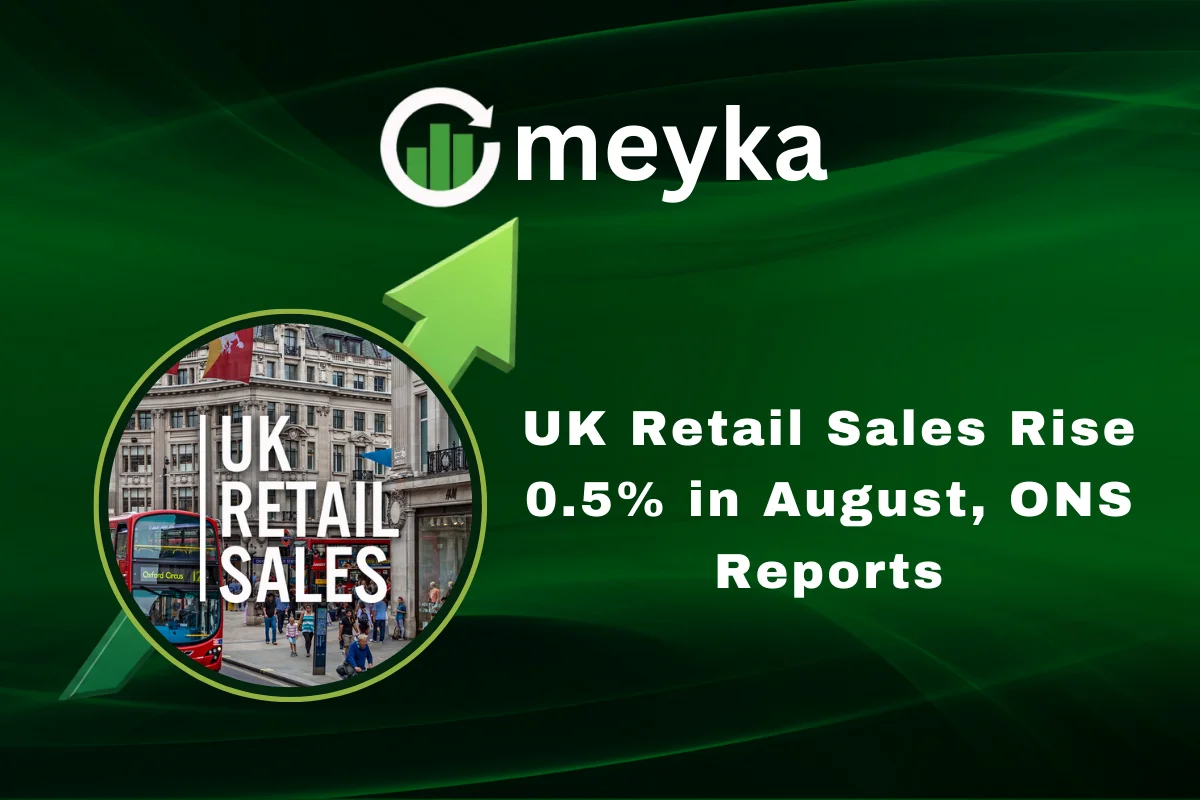UK Retail Sales Rise 0.5% in August, ONS Reports
The UK retail sector showed resilience in August as sales rose by 0.5%, according to the latest figures from the Office for National Statistics (ONS). This rebound comes after months of fluctuating demand and reflects renewed consumer activity despite ongoing inflationary pressures.
For businesses, investors, and consumers alike, the data provides a snapshot of how Britain’s economy is adapting during uncertain global conditions.
A Stronger-than-Expected Performance in UK Retail
The ONS report revealed that UK retail sales volumes increased more than anticipated in August. This modest rise is significant, given the challenges posed by high energy costs, inflation, and interest rate concerns. Analysts had expected a slower rebound, but strong demand in key categories helped push the overall figure higher.
Food stores, non-food retailers, and online platforms contributed positively, while fuel sales remained steady. This performance highlights that UK households, though cautious, are still willing to spend selectively, particularly on essentials and discounted items.
The Role of Consumer Confidence
Consumer confidence remains fragile, but the August sales data suggest a gradual recovery. According to surveys conducted alongside the ONS report, many shoppers are adjusting their spending habits rather than cutting them entirely. Value-driven purchases, loyalty schemes, and promotions continue to attract buyers.
The growth was also supported by seasonal factors, such as back-to-school shopping and summer clearance sales. However, experts warn that sustained improvement in UK retail will depend on wage growth keeping pace with inflation and a slowdown in borrowing costs.
Impact on Businesses and Investors
The sales increase carries mixed implications for businesses. Retailers focusing on essentials and affordable goods are gaining traction, while luxury segments face more pressure. Online sales continue to play a major role, with digital platforms capturing a growing share of the market.
For investors, the data feeds into stock research trends across the retail sector. Positive momentum may strengthen confidence in consumer-focused companies listed on the stock market, though risks remain. For example, firms with high debt exposure could still face challenges if interest rates remain elevated.
Some analysts draw comparisons between consumer stocks and AI stocks, noting that while the latter is driven by innovation and long-term growth, retail stocks remain cyclical and sensitive to economic shifts. Understanding these patterns helps investors diversify effectively.
Breakdown of Retail Categories
The August rise of 0.5% was not evenly distributed across all retail categories. The ONS breakdown highlighted the following patterns:
- Food Stores: Strong performance due to increased household purchases of essentials and price promotions.
- Non-Food Retailers: Modest gains, particularly in clothing and household goods, fueled by seasonal discounts.
- Online Sales: Growth accelerated as more consumers continue to embrace digital shopping for convenience and value.
- Fuel Sales: Relatively flat, reflecting stable demand and steady pricing.
This distribution underscores the shift in consumer behavior toward needs-based and value-driven spending.
Economic Factors Behind the Numbers
Several macroeconomic factors influenced the sales performance in August:
- Inflation Trends – While inflation remains above the Bank of England’s 2% target, recent months have seen a slight moderation, giving consumers a bit more breathing space.
- Interest Rates – The Bank of England’s monetary tightening has slowed borrowing but also curbed disposable income for mortgage holders.
- Employment Growth – A strong labor market has supported spending power, even as households face rising living costs.
- Global Conditions – Supply chain pressures are easing compared to 2022, reducing volatility in retail pricing.
These conditions highlight why UK retail sales managed to avoid contraction in August.
Comparison With Previous Months
The August figures marked a turnaround compared to July, when wet weather and subdued consumer sentiment dampened spending. The bounce-back demonstrates how quickly retail performance can shift with seasonal patterns and consumer moods.
Looking back over the year, volatility has been a recurring theme. Sales have swung between growth and decline, making it difficult for retailers to plan long-term strategies. This uncertainty underscores the importance of flexibility and innovation within the sector.
Future Outlook for UK Retail
While August’s performance is encouraging, the outlook for UK retail remains cautious. Analysts expect uneven growth in the coming months, with spending likely to be influenced by holiday shopping, energy bills, and broader economic conditions.
Technology adoption will remain central. Retailers who invest in data-driven insights, AI-powered customer engagement, and efficient supply chains will be better placed to withstand market shifts.
On the investment front, traders will continue to balance interest in cyclical consumer stocks with growth-oriented sectors such as AI stocks. By combining careful stock research with awareness of retail dynamics, investors can capture opportunities while managing risks.
Global Perspective
The UK’s performance mirrors similar trends across Europe and North America, where retail sectors are experiencing modest rebounds after inflation-driven slowdowns. Countries with strong labor markets and easing price pressures are seeing consumers cautiously return to stores and digital platforms.
International comparisons are important because UK retailers often rely on global supply chains and cross-border demand. A stable global trading environment will be key for sustained recovery.
Conclusion
The 0.5% rise in UK retail sales in August signals resilience amid economic challenges. Consumers are adjusting their habits rather than retreating entirely, while retailers continue to adapt through promotions, digital expansion, and value-driven strategies. For investors, the data adds valuable insights for stock research, providing context for decisions across the stock market and beyond.
As the year progresses, the sector will face both opportunities and risks. Flexibility, innovation, and consumer focus will determine which businesses thrive in a shifting retail landscape.
FAQs
Sales rose due to stronger demand in food, clothing, and online shopping, supported by seasonal promotions and improved consumer confidence.
Retail performance influences investor sentiment, impacting consumer stock valuations. Strong sales can improve confidence, while weak data may lead to caution.
Key challenges include high inflation, interest rate pressures, shifting consumer behavior, and competition from global and online players.
Disclaimer:
This content is made for learning only. It is not meant to give financial advice. Always check the facts yourself. Financial decisions need detailed research.






